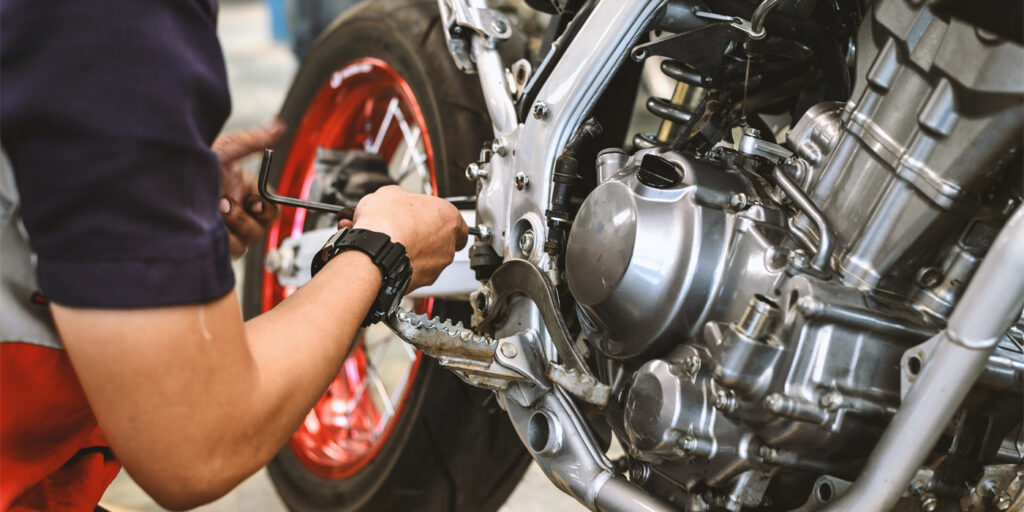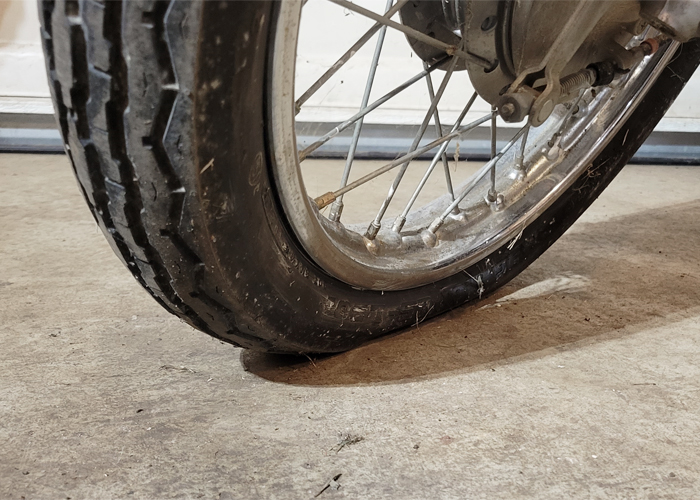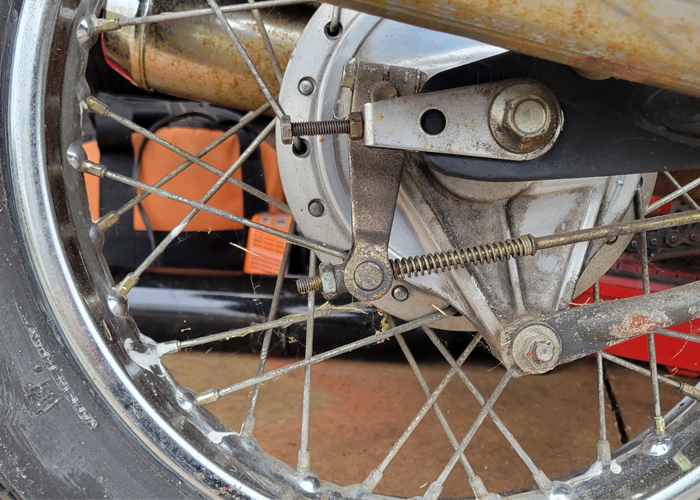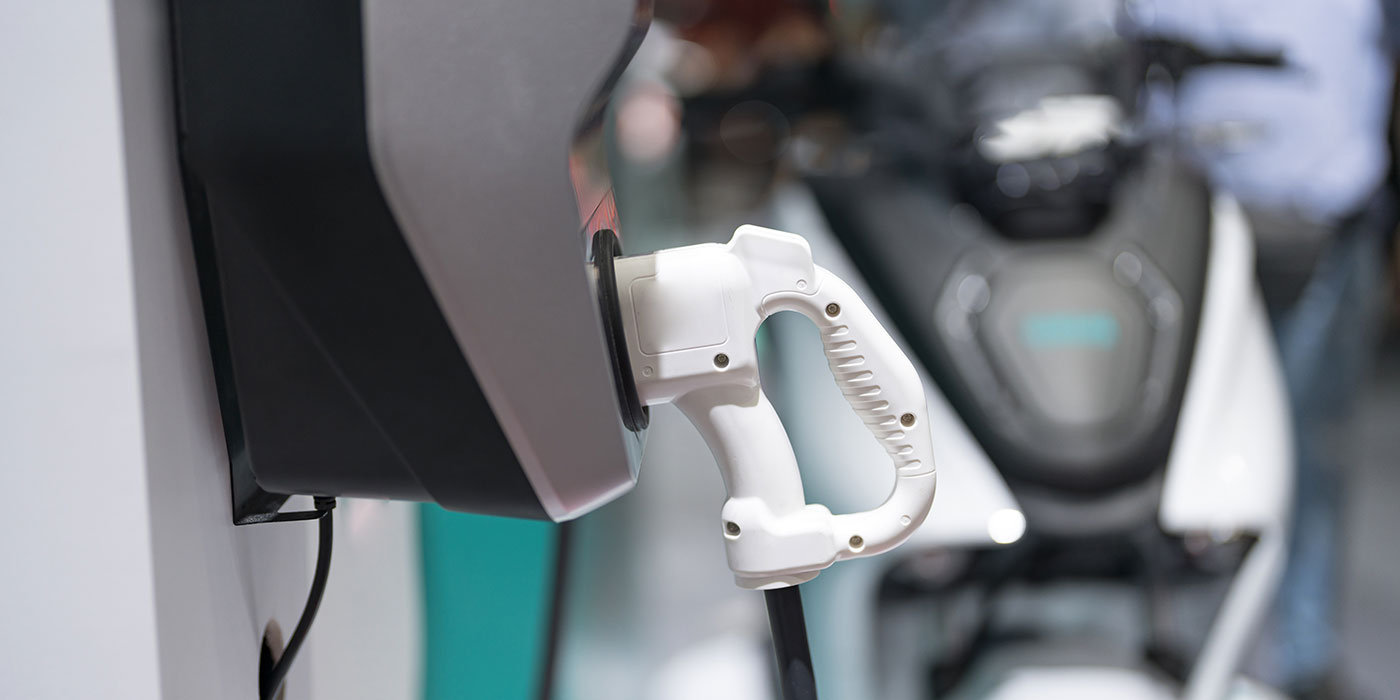Last month, we talked about how to look over motorcycle gear to make sure it’s ready for the season. In this article, we’ll discuss some of the maintenance you or your customers should be doing on a motorcycle before the season starts.
Oil and Filter Change
Let’s start with the most common form of maintenance: an oil change. Chances are that the oil inside the engine is due to be replaced, especially if the motorcycle has been sitting all winter. Motorcycle manufacturers may have different oil change intervals, but I’m a firm believer in starting the season off right with a new filter and fresh oil.
Whenever I change the oil in one of my vehicles — two-wheeled and four-wheeled alike — I use it as an opportunity to really look over the entire machine. It’s the perfect time to look for any signs of wear, damage or anything else that might leave me stranded on the side of the road. Remember, preventative maintenance is the best kind of maintenance!
Changing the oil is an easy job with basic hand tools. If you don’t have one, you’ll probably need a low-profile drain pan. Why? Because the frame rail on a motorcycle is lower than you’d think, and the drain pan you use to change the oil in a car might be too tall to slide underneath the bike. You can usually find this type of oil pan at any auto parts store.
Be sure to have some rags on hand to clean up any spills and a small funnel to pour the fresh oil into. I always have a can of brake cleaner around just in case I make a mess. Be sure to use the recommended oil, and don’t overfill it.
Check the Tires
Tires might be one of the most important things on this checklist. After all, they’re the one component that is responsible for helping the bike to stick to the road. I’ve been in the habit of looking over tires at least once a week, but the pre-season check is critical.
Check the Tire Pressure
Tires can’t do their job very well if they’re low on air, so check the tire pressure and fill it up as needed. If the pressure is low, you should inspect the entire tread surface for any signs of punctures. It may have picked up a nail or piece of debris from the road.
Take a look at the front tire from this 1978 Honda Twinstar; it’s almost completely flat. If the front tire is low on air, the bike will feel sluggish to turn or maneuver, and a front tire blowout almost certainly leads to a crash. Let’s not forget that a low tire won’t wear the way it should, and its lifetime could be cut down significantly if it goes unnoticed.
Check the Tire Condition
Motorcycle tires are unique compared to the tires on cars and trucks. Motorcycle tires have a rounder profile, which helps to maintain traction as the bike pivots side-to-side. However, the center of the tire contacts the road surface the most, and as a result it will usually wear down faster than the rest of the tire. If your tire is looking worn down or shows any signs of cracking or dry-rotting, it might be time to replace it. It would be better to do it now before the season starts, rather than waiting until mid-season and being without a bike while the work is done.
Check the Brakes
If the tires are the most important item on this checklist, the brakes are a close second! We all know what job the brakes perform, and hopefully we never experience a brake failure. I’ve experienced it in cars and trucks but never on two wheels. If your bike has drum brakes, check the linkage and adjust it as outlined in the owner’s manual or service information. Check the brake linings for any signs of deterioration or wear.
Check the brake fluid level and color. If the color appears dark or contaminated, it may be time to flush it with fresh fluid. Brake fluid is hygroscopic, which means that it absorbs moisture from the air. This lowers the boiling point of the fluid and can hamper the effectiveness of the entire hydraulic system.
Check the Lights
The lights on the motorcycle are there for your safety. The headlights illuminate the road ahead, and your indicators communicate your intentions to those around you. It only takes a moment to look around the bike and make sure all of the lights are working. Check the low and high beams, turn signals and taillight.
Inspect the Driveline
The last item on our checklist is the driveline: That means everything between the engine and the wheel. Check the oil level inside the transmission and adjust if necessary.
If the bike is chain-driven, inspect, clean and oil the chain as needed. If the bike is a shaft drive, check the gear oil condition and fill level. A little bit of maintenance and care here will mean many more worry-free miles this season.
Check the Maintenance Schedule
Powersports manufacturers publish maintenance schedules for all of their machines. This may include replacing certain fluids at a given mileage/time interval, inspecting key components or making manual adjustments to systems. One such example would be valve adjustment performed on Ducati and Triumph engines. This routine service may be costly, but it ensures maximum engine performance and lifetime for the rider.
And with that, you’re one step closer to being ready to ride this season. From one motorcycle enthusiast to another, I wish you all a happy, fun and safe riding season in 2022. I’ll see you out on the road!
















